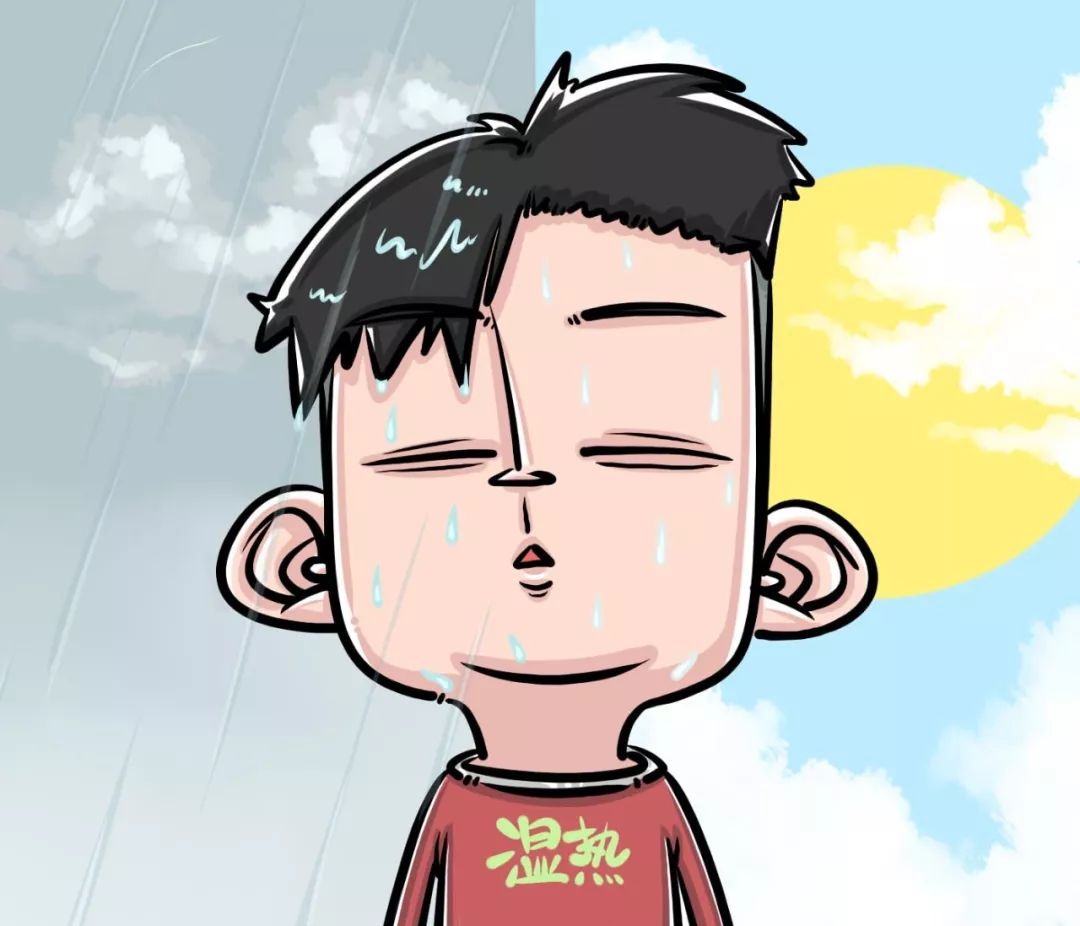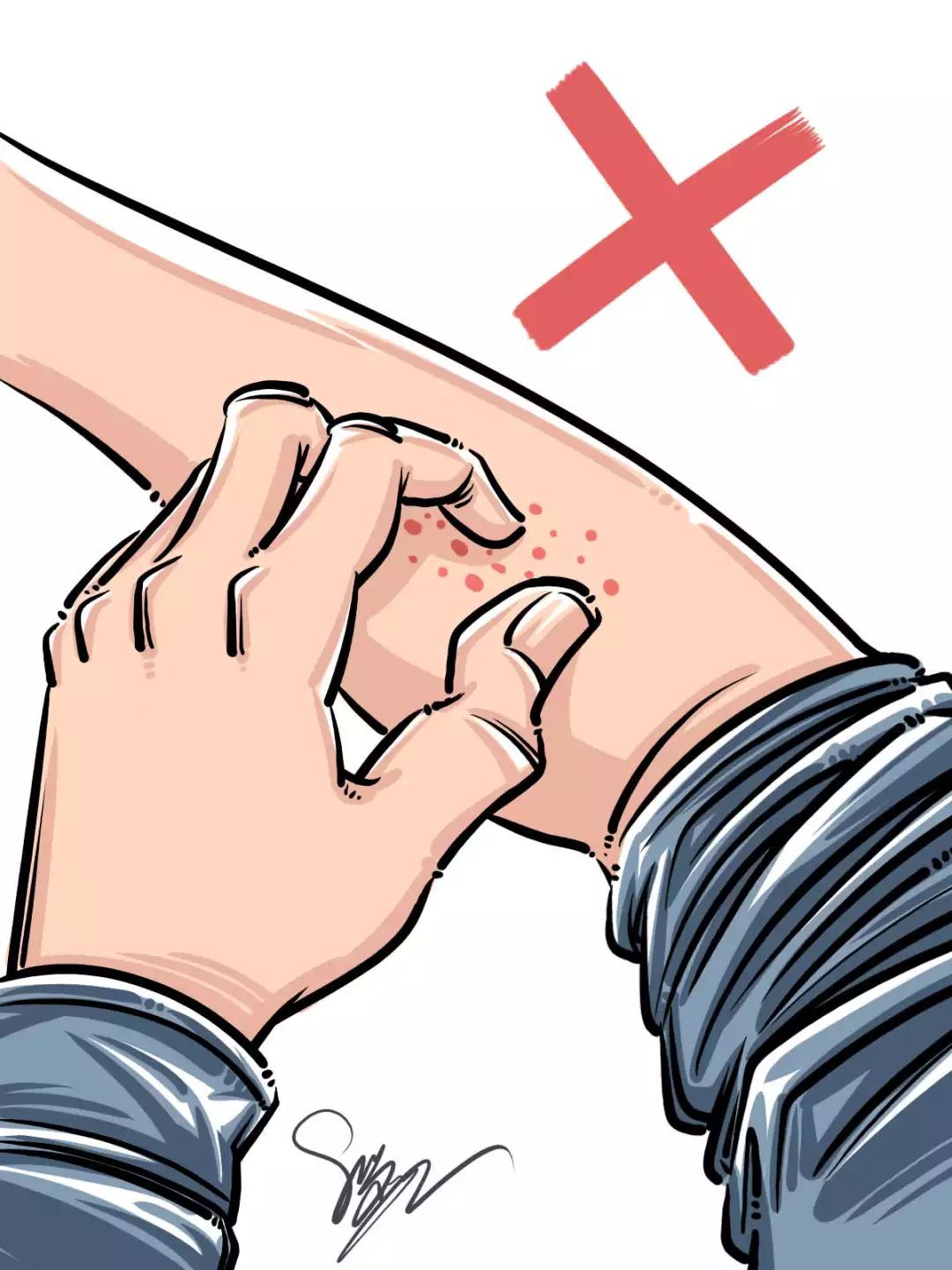

As everyone can see from the title, today we will discuss something important. In some places, it is not very hot yet, so why are we talking about this so early? This is because many people’s living habits are poor, and their bodies are already filled with “dampness”. When summer arrives and the heat intensifies, the damp-heat evil will surely wreak havoc. Without further ado, let’s first take a look at this “dampness”!
When it comes to damp evil, those studying TCM often find it quite daunting. Why is that? Firstly, the human body is particularly susceptible to damp evil because our environment and daily routines are excessively “damp”. This requires an explanation from the perspective of disease causation.

In TCM, dampness is categorized into “external dampness” and “internal dampness”. External dampness arises from humid climates or exposure to rain or living in damp environments, which allows external moisture to invade the body. Internal dampness is a pathological product often related to digestive function. TCM believes that the spleen has the function of transforming and transporting water and dampness. If the body is weak, digestion is poor, or if one overeats, especially fatty and sweet foods, the spleen cannot function properly, leading to “internal retention of water and dampness”. Individuals with spleen deficiency are also prone to external dampness invasion, and external dampness can often obstruct the spleen and stomach, causing internal dampness to arise. Thus, both are independent yet interconnected.
Moreover, damp evil is troublesome because it can combine with other pathogenic factors, invading the body and causing illness, such as cold-dampness, damp-heat, and summer-dampness. Additionally, TCM considers damp evil to be sticky and difficult to resolve. For instance, eczema on the skin can be very hard to treat and may persist for years or even decades.
I once met a gentleman in his 70s in Chengdu, a true Sichuanese who loved spicy food and had a strong palate. He suffered from athlete’s foot, and while traveling in the south, possibly due to excessive dampness, his athlete’s foot became infected, leading to lymphangitis (erysipelas), and ultimately resulted in bacteremia (sepsis), causing organ failure. Unfortunately, he could not be saved. Ultimately, this was due to the infection from athlete’s foot leading to sepsis, highlighting the significant dangers of dampness.
I actually wanted to discuss the various evils that conspire together, but due to space limitations, I will focus on the damp-heat that is closer to us!
Damp-heat refers to the simultaneous invasion of heat and dampness into the body or the coexistence of these pathological changes within the body. Common clinical manifestations of damp-heat syndrome include fever, body heat without relief, heavy and painful head, heavy and painful body, bitter mouth, chest fullness, yellow and scanty urine, red tongue, yellow and greasy tongue coating, and a slippery and rapid pulse.

So how can one determine if there is dampness in the body?
Look at the tongue coating; generally, individuals with heavy dampness have a thick and greasy tongue coating. If the damp evil has stagnated for a long time and transformed into heat, it will become a thick yellow coating. If one has poor appetite during meals, a grayish complexion while washing up, sticky and unsatisfactory stools, lethargy at work, swollen limbs before sleep, and a thick greasy tongue coating, it indicates that damp evil may be present in the body.
Additionally, damp-heat can lead to many diseases, such as eczema, athlete’s foot, scrotal eczema, herpes zoster, tinea manuum, tinea pedis, acute and chronic eczema of the lower limbs, dermatitis, anal itching, rosacea, and gynecological issues like abnormal vaginal discharge (various vaginitis), acute and chronic urinary tract infections, menstrual irregularities, and pelvic inflammatory disease. Internally, it can cause diarrhea, dysentery, enteritis, jaundice, hepatitis, and gastric ulcers (damp-heat type). Lastly, in surgery, it can lead to redness, swelling, heat, and pain in the feet and knees, rheumatic arthritis (damp-heat syndrome), lower limb varicose veins with damp-heat, lower limb ulcers, diabetic foot, lower limb erysipelas, sciatica (damp-heat syndrome), damp-heat lower back pain, etc.

This lengthy discussion may have frightened everyone. But don’t worry, our ancestors have ways to deal with this damp-heat! The remedies I will mention are not guaranteed to cure all ailments, but they can effectively eliminate damp-heat. These remedies are—Er Miao Wan and San Miao Wan. Let’s first talk about Er Miao Wan.
Er Miao Wan is a name for a Chinese patent medicine, and the TCM formula is called Er Miao San, which belongs to the category of damp-dispelling agents. This remedy originates from the book Danxi Xinfa by Zhu Zhenheng from the Yuan Dynasty and contains only two herbs: Huang Bai (Phellodendron) and Cang Zhu (Atractylodes). It is known for its significant ability to clear heat and dry dampness. It is suitable for conditions such as red, swollen, and painful knees, leg pain, damp sores, and more. This formula is particularly effective for cases of severe damp-heat, with clinical applications focusing on swollen and painful feet and knees, short and red urine, and a yellow and greasy tongue coating as key diagnostic points.

Some may say that these two herbs alone cannot treat diseases, but that is not the case. Although this formula contains only two herbs, it is a fundamental formula for treating damp-heat accumulation. For the diseases mentioned earlier, damp-heat can flow to the lower limbs, causing weakness and atrophy of the legs, leading to atrophy syndrome. Damp-heat can obstruct the meridians, resulting in pain in the muscles and joints, or athlete’s foot. When damp-heat accumulates in the lower abdomen and genital area, it can lead to foul-smelling vaginal discharge or lower body damp sores. The treatment should focus on clearing heat and drying dampness, with Huang Bai as the monarch herb, chosen for its bitter properties to dry dampness and its cold nature to clear heat, effectively targeting damp-heat in the lower jiao. Cang Zhu, as the minister herb, is pungent and drying, known for strengthening the spleen and drying dampness.
In addition to traditional uses, Er Miao Wan has many new applications in various fields. Modern research indicates that this remedy also has antipyretic, antibacterial, sedative, and gastrointestinal spasm-relieving effects, earning it the reputation of being a “Chinese herbal antibiotic”. Here are some clinically effective new uses that can be considered for satisfactory results.
First, for excessive vaginal discharge.According to professionals, in clinical applications of Er Miao Wan for 27 patients with excessive vaginal discharge, 22 were cured after 10 days of treatment, accounting for 81%. The specific method is to take 5 grams of Er Miao San, dissolve it in boiling water, and take it twice daily for a course of 5 days. Generally, after 2-3 courses of treatment, symptoms can disappear.
Next, for treating oral ulcers.Mix Er Miao San with honey in a ratio of 1:5, store it in a bottle. When needed, apply the paste to the ulcer three times a day, swallowing after holding it in the mouth for 15 minutes. Avoid eating within one hour after taking the medicine. This method can lead to the ulcer healing within 3-5 days.
Finally, Er Miao Wan can also treat pustular infections.Method: First, mix Er Miao Wan with petroleum jelly in a 1:5 ratio, apply it to the affected area once daily. Internally, take 6 grams three times a day with warm water. Generally, healing can be achieved within 2-5 days. Additionally, it is important to ensure that this remedy is used only after confirming that the disease is of the damp-heat type; differential diagnosis and treatment must not be forgotten.
After learning about Er Miao Wan, San Miao Wan should be easy to understand.
San Miao Wan is based on Er Miao Wan with the addition of Chuan Niu Xi (Achyranthes). The purpose of adding Niu Xi is to nourish the liver and kidneys, strengthen the muscles and bones, and guide the medicinal properties downward, specifically targeting pain. The main functions of San Miao Wan are to dry dampness, clear heat, reduce swelling, and relieve pain. It is used for damp-heat accumulation leading to damp-heat obstruction syndrome, itchy and painful eczema, swollen and painful athlete’s foot, and damp-heat vaginal discharge, presenting with severe redness and swelling in the feet and knees, low back pain, fatigue, poor appetite, and yellow, foul-smelling discharge with itching in the genital area, and short, red urine. It is commonly used for rheumatic arthritis, myasthenia gravis, progressive muscular atrophy of the lower limbs, scrotal eczema, and pelvic inflammatory disease with the above manifestations.
Some clever friends may have already thought that since there are Er Miao and San Miao, there must also be Si Miao.Indeed, Si Miao Wan is based on San Miao Wan with the addition of Yi Yi Ren (Job’s Tears).
Si Miao Wan is recommended in cases of deficiency. For example, if there is weakness in the lower limbs, especially if both legs show symptoms of damp-heat along with fatigue, Si Miao Wan can be chosen.

Er Miao, San Miao, and Si Miao Wan can all be purchased at pharmacies, as they are Chinese patent medicines.
To summarize: Er Miao Wan primarily clears damp-heat; if eczema and itching occur without other symptoms, it can be selected. If there is redness, swelling, and pain in the joints of the lower limbs, San Miao Wan should be chosen. Si Miao Wan can be used for any damp-heat syndrome, regardless of deficiency or excess.

However, these remedies are contraindicated for individuals with yin deficiency, weak stomach, and pregnant women, so please remember.
This concludes the discussion on damp-heat and related treatments, with a focus on the uses of Er Miao Wan. However, there is no need to rush; I will gradually introduce related content in the future.

Related Articles Links
“Hot Meat Bone Tea Can Be Drunk in Damp-Heat Summer”
“How to Eliminate Cold-Dampness and Damp-Heat from the Body?”
“For Skin Problems Caused by Damp-Heat, Try Dang Gui Ku Shen Wan!”
“Discussing Herpes Zoster in Damp-Heat Weather”
Yuan Li◎Article
Ba Sui◎Comics
Yuan Li Yun Shao◎Editor



Prize-Winning Essay Collection
If you also have a story related to TCM that you must share, please write it down and submit it to us at any time. Articles should be submitted in Word document format to our email
Submitted articles must be original and include your WeChat nickname, name, phone number, address, and other contact information. After screening, we will obtain authorization from the authors to publish in our channel. Once published, we will send you a signed book by Dr. Luo!
Thank you all for your positive feedback. We look forward to you sharing your stories with us and more people, allowing more individuals to experience the charm of Chinese culture.

Dr. Luo’s official WeChat account has the following four, please long press the QR code to identify and follow. Any others are imitations, so please do not be deceived!

Dr. Luo Da Lun Channel
WeChat ID:
luodalunpd
Da Lun Academy
WeChat ID:
Dalun_sy


1. The copyright of original articles in this public account belongs to this account. If you need to reprint, please leave a message to the editor and indicate the source. Commercial use is prohibited.
2. The articles reprinted in this public account are for learning and communication purposes only and fall within the scope of fair use. If there are errors in the attribution of image sources, data sources, or text copyright sources, please inform the editor, and corrections or deletions will be made immediately.
3. This public account holds the portrait rights of Dr. Luo Da Lun. Any unauthorized use will be pursued legally.
4. This public account is legally supported by Beijing Zhongzhe (Shenyang) Law Firm. This account will pursue legal responsibility for any unauthorized reprints, commercial use, and refusal to delete posts after warnings.

